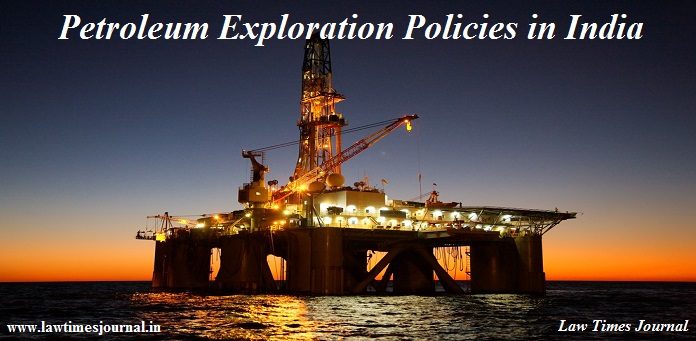
In 1882, “Dig boy, dig! “, yelled the Canadian Engineer, Lake after 23 years of the Historic Oil Exploration, Drake Well in United States which resulted in the now called Digboi township in the North Eastern Assam. The Drake Well exploration marked the beginning of the Petroleum Era and Lake found Asia’s first petroleum refinery which is also the World’s second, after they saw the Elephants walking out with Oil stains in their feet.
As a result of the Liberalization, there arose the need to de-regulate and delicense the core sectors including the petroleum sector. Upstream petroleum was then monopolized. To meet the need of the agency to supervise the petroleum exploration, Directorate General for Hydrocarbons was instituted in the year 1993 addressing the national interest. It is an independent regulatory body under the administrative control of Ministry of Petroleum and Gas of the Government of India.
New Exploration Licensing Policy – NELP
New Exploration Licensing Policy, a policy by the Government of India, approved in the year 1997, applied to all the contracts between the years 1997-2016, empowering DGH as its nodal agency. It was the new model for the award of Hydrocarbon acreages towards exploration and production. Before 91-92, only ONGC and OIL were able to take part in the bidding to acquire license (PEL- Petroleum exploration license). The policy welcomed 100% FDI and didn’t mandate compulsory state participation. Licensing was given for Petroleum blocks through International Open competitive bidding. ONGC and OIL were also made to compete in the bid for the PELs instead of nomination. Also, freedom was granted to the contractors to market Crude oil in the domestic markets. NELP’s bidding rounds did attract many private and international players.
Significant features
The major drawbacks were due to its separate licensing policies for different Hydrocarbons and by then Unconventional Hydrocarbons were unknown to the Policy which was silent about its existence. Like, if another type of Hydrocarbon was found during exploration, there existed the need to obtain a new license to extract the found Hydrocarbon which just increased the cost.
Production Sharing Contracts (PSCs) were signed for profit sharing. According to the bidding percentage, the Contractors should share the profit with the government, until then cess and etcetera should be shared. These contracts kept the Contractors checked by the Government and held them accounted. To track the revenue, the Government demanded approval from itself at certain stages in order to have a check, which left the approval to the Government’s discretion. This process of approval of activities and cost delayed the projects and created disputes.
The bidding was given for blocks, thus putting the bidders whose interests extended to other areas discouraged. The pricing of the Oil was fixed by the Government itself which resulted in loss. Revenue was fixed for both the Shallow water fields which involved lower risks than that of Deep/Ultra water fields.
Hydrocarbon Exploration Licensing Policy – HELP
Hydrocarbon Exploration Licensing Policy, introduced in 2016, replaced the then existing New Exploration Licensing Policy. It was brought down to enhance the domestic oil and gas production. It introduced uniform license for exploration and production of all forms of hydrocarbon and also granted freedom to market crude oil and natural gas in the domestic market.
The uniform licence will enable the contractor to explore conventional as well as unconventional oil and gas resources under a single license and the concept of Open Acreage Policy will enable E&P companies choose the blocks from the designated, addressing the two major drawbacks of the NELP.
Shift from NELP to HELP
The new policy aimed at enhancing transparency and in the reduction of administrative discretion. One of the major reasons for the shift in the policy being India’s place in the consumption of Crude Oil in the World. The country is fully dependent on the Crude Oil imports to meet the demand existing. Petroleum Minister Dharmendra Pradhan has said that nearly 2.8 million Sq. Kms. Of sedimentary basins are up for exploration. The new exploration policy also aims to attract investment in Oil and Gas sector and to increase the employment of both skilled and unskilled labourers.
As the new policy introduces the new licensing system which covers both the conventional and non-conventional hydrocarbons, through its open acreage policy, it also lets the contractors to choose the block throughout the year and not only when the government announces the bidding. As the rule being Minimum Government and Maximum Governance, bidders now can quote the low and high revenue point. Also, the freedom is given to fix the cost incurred for the exploration.
Benefits
Governmental scrutiny being the major drawback of NELP, created various delays and disputes in the projects. In the old policy, government failed to give its attention to the low and high risk involving, thereby failed to fix the appropriate royalties. This was address in the new policy. Unconventional Hydrocarbons which were not included in the clauses of the previous policies were met in this new policy.
The new policy eases out disputes, delays and corruptions involved in the Petroleum and Gas Exploration in the country by removing Government’s discretion. It is believed to create employment and simplification of procedures with marketing freedom are welcomed by the stakeholders by and large.





